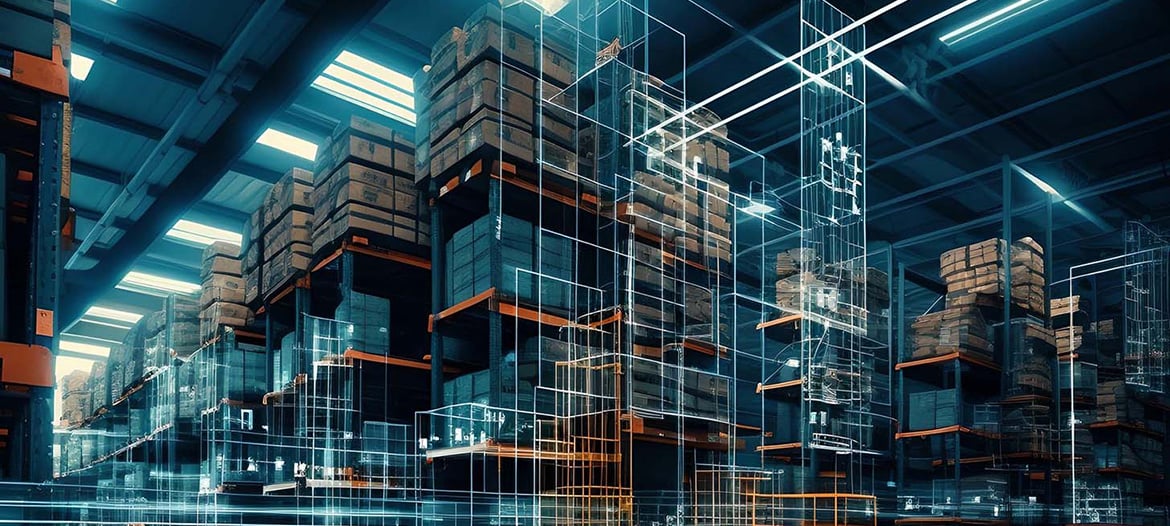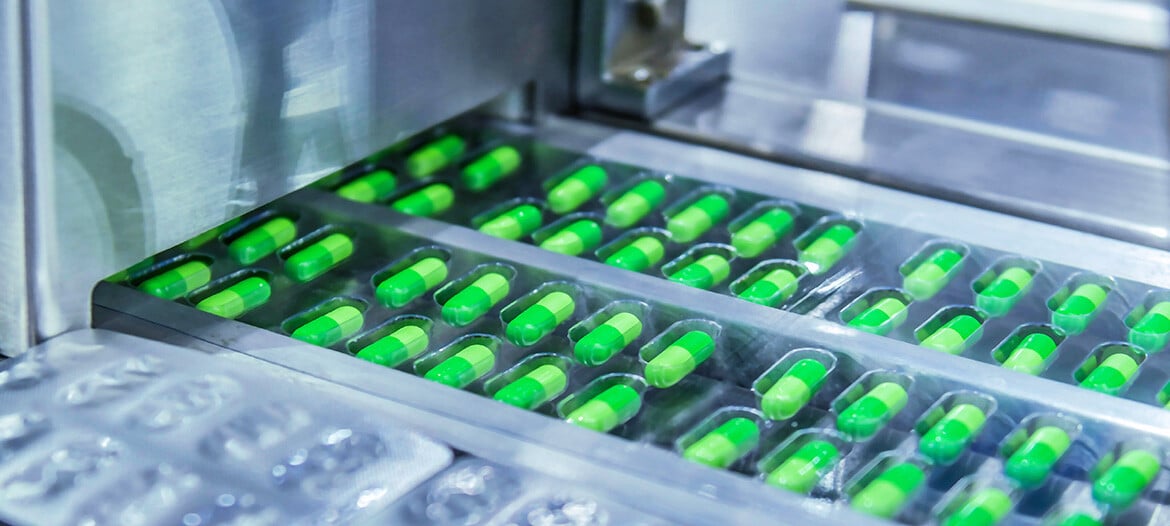GPS: Not a Long-Term Solution for the Pharmaceutical Supply Chain
Real-time monitoring and IoT technologies are ‘talk of the town’ in all pharmaceutical conferences related to distribution of temperature sensitive product. Many expect this to be the solution to solve current challenges in the pharmaceutical supply chain. The evolution of data loggers and condition monitoring systems continue to develop at an accelerated pace, fueled by advancements in telecommunication and the auto industry. Cellular based condition monitoring systems, which arrived in the market place several years ago, are now being challenged by new systems and technologies. Higher value payloads have driven manufacturers and logistics providers to desire more visibility to shipments condition and location.
Limitations
 Real-time monitoring ensures pharmaceutical companies always have their data – without asking a customer to upload it, send it back or log into a third-party system. Better still, real-time monitoring ensures manufacturers know the condition, position and route of their highly-valuable goods.
Real-time monitoring ensures pharmaceutical companies always have their data – without asking a customer to upload it, send it back or log into a third-party system. Better still, real-time monitoring ensures manufacturers know the condition, position and route of their highly-valuable goods.
However, do the current solutions live up to these expectations of “always having data”?
This all depends on the application you are using it for. For location monitoring, GPS devices have been used for many years. Adding a temperature sensor and or other sensors to monitor other parameters is a natural progression. The GPS devices built into trucks, cars or smart containers are fixed in one place. Size is not an issue. Power is over the battery of the truck or car and therefore not an issue.
For products in-transit, temperature conditions are monitored on pallet, product box or even item level. In these cases, the size of a device is an issue. Current data loggers with GPS are very large and cumbersome in the logistics process.
Today’s GPS data logger packages are heavy and drain batteries quickly, limiting the transit time that can be monitored. Another challenge is the antennas that are still relatively large. Post stamp antenna sizes are in development but have not proven efficiency over time.
Therefore, where current GPS data loggers have been useful for some applications, the use for pharmaceutical products in-transit is just in the beginning.
Power source

A major challenge using real-time GPS data loggers is the amount of power they need to transmit information. Transmitting “send the real-time data to database” costs energy, too much energy. Ideally if we monitor pharmaceutical products, we want minimum an interval of 10 minutes. If we would transmit every 10 minutes, the temperature and location information to a database this would mean we need a huge battery, perhaps the size of a car battery. Currently this is being resolved by monitoring with a 10-minute interval but transmitting the data once every hour or day. Still battery life on average is 20 days.
The current state-of-the-art lithium power cells also have tremendous challenges related to air shipment, safety and cell decay. IATA (International Air Transport Association) publish guidelines that are enforced though compliance agreements with the Federal Aviation Administration (FAA). IATA regulates the chemistry and content of batteries shipped on air carriers that make up approximately 82% worlds air traffic. They have limited the number of cells, the metal content per cell and the transmission requirements for devices that are shipped via air transport.
This has necessitated that manufacturers do more with less power and develop sophisticated algorithms and defensive programming to meet the IATA requirements and to still fulfill customer requirements. Additionally, lithium batteries decay. One might experience acceptable performance with a new device but two or three years down the line expensive devices with integral battery packs begin to experience performance issues because batteries no longer accept a full charge and cannot achieve the required performance levels. A lithium battery that charged to 98% its full charge levels during the first year might only achieve 80% charging level in year 3. Thereby causing the devices to prematurely shut down during transport. Complex logistics protocols are required to assure that devices are recharged or power levels are verified pre-shipment. This adds additional costs and potential for error.
Many industries, auto, military, aerospace and telecommunications are investing tremendous resources in developing new battery technologies that are proving to far surpass lithium cells. These new chemistries do provide challenges. Some require that the cells are maintained within specific temperature parameters for peak performance. But when these requirements are achieved, they put out an incredible amount of power for a substantially longer duration than current batteries. These new power sources will be entering commercialization during the next decade. These new technologies have the potential to solve many of the issues that lithium has presented to many industries. They will make devices, smaller, run longer at higher energy levels and at cooler temperatures with less potential for combustion or explosion. These cells are in development now. They are undergoing extensive testing now. They exist now. At no point in the world’s technological history has so many devices relied on battery power. And at no point before did it make the financial decision to invest huge resources on battery technology development. In industry both here in the United States and in laboratories all over the world, engineers, scientists and technologists are meeting the challenge of developing revolutionary battery technology for commercial and consumer products.
Developments go fast and new inventions are presented every day. Still it would take time to prove the technology works and production capacity is setup. For that reason, we state that current standard cellular mobile phone communication is not the in-transit solution to move forward for real-time data loggers with geo location information. Therefore, we need to look for other communication technologies like LTE-M or NB IoT. These new solutions that are developed to transfer low packages of data using low battery power, as you will read below.
Cost
Real-time monitoring devices are expensive. The brain of the device, the communication modules, are still high-value components. However, expectations are that these will drop each year. Higher demand will affect pricing in a positive way. Currently these devices are supplied as multiple use devices. Prices range from $30.00 - $50.00 per transit are mentioned. Provided you are re-using them 10 times during its lifecycle.
People who are working longer in the cold chain distribution industry know from years ago getting your multiple-use dataloggers back is a challenge. Especially when it is outside of your company’s network. The return of dataloggers can be a job by itself. For that reason, everybody is now using single use data loggers if there is no return logistics in place. With increasing number of real-time loggers being used, so will the challenges in return logistics increase. Ultimately, the question will come up, whether a single-use real-time logger would be available.
If not current communication technologies, then what?
Regular 4G works for real-time loggers with geo data but has its flaws. 5G would solve many problems. However, it will take another 5 years before there is 5G worldwide coverage.
Nationwide coverage today is being achieved by using LTE-M and NB-IoT communication technology. Battery consumption for a single use device will be 129 days. Multiple use would be 400 days. Due to this reduced power consumption and the required small data sizes we need to transmit for location and temperature, it is the ideal combination. Since it is using lower energy, the size of the device can be reduced and will reduce further overtime.
LTE-M: A low power wide area technology, which supports IoT through lower device complexity and provides extended coverage, while allowin g the reuse of the LTE installed base. This technology can extend battery life, potentially by up to 10 years. LTE-M is ideal for applications that are in-transit, or moving.
g the reuse of the LTE installed base. This technology can extend battery life, potentially by up to 10 years. LTE-M is ideal for applications that are in-transit, or moving.
NB-IoT: A standards-based low power wide area technology developed to enable a wide range of new IoT devices and services. NB-IoT significantly improves the power consumption of user devices, system capacity and spectrum efficiency, especially in deep coverage. Ideal for utility metering. It uses widely available infrastructure, consumes very little energy which keeps device and deployment costs low. NB-IoT can reach deep within buildings and can support large numbers of units. NB-IoT is ideal for stationary applications, or in-storage.
Looking to the future
The defense department and other major industry segments realized years ago that GPS was a resource, but not the answer to determine a devices geographical position. The Defense Advanced Research Projects Agency (DARPA) invests substantial resources into research of new systems. They are focusing on Next-Generation Technologies such as Positioning, Navigation & Timing (PNT). GPS signals cannot be received underground or underwater and can be significantly degraded or unavailable during solar storms and adversaries can jam signals. DARPA is developing new physics, new devices, and new algorithms so systems can break free of their reliance on GPS. DARPA is exploring innovative technologies that will provide reliable, highly accurate PNT capabilities when GPS capabilities are degraded or unavailable.
Technologies such as:
-
Adaptable Navigation Systems (ANS)
-
Microtechnology for Positioning, Navigation, and Timing (Micro-PNT)
-
Quantum-Assisted Sensing and Readout (QuASAR)
-
Ultrafast Laser Science and Engineering (PULSE)
-
Spatial, Temporal and Orientation Information in Contested Environments (STOIC)
-
Micro Inertial Navigation Systems (IN)
-
Artificial Intelligence (AI)
These new systems are allowing next generation devices to navigate and report locations not solely based on any one positioning system. The AI and multiple sources of input enhance systems capabilities to accurately locate devices in challenging environments. Let’s watch this space!
Summary
As pharmaceutical supply chains continue to be challenged by the havoc of a pandemic, unique requirements of life-saving therapies, and extreme value of some payloads… the use of real time monitoring is eagerly anticipated to provide visibility and peace of mind.
With such heavy interest and investment by government and private companies in new battery technologies, new communication networks, and next gen navigation and positioning technologies the future is bright.
Already today, there are new real time monitoring solutions for the pharmaceutical supply chain that don’t use lithium batteries and take advantage of LTE-M and NB-IoT communication networks allowing for lower power consumption and deeper connectivity into trucks, boxes and warehouses.
To learn more about the new LIBERO G Mobile-IoT solution, visit here.
Authors
 Frank Obrad is a Senior Packaging Engineer at Kite Pharma, working under Supply Chain Packaging Engineering. He leads the design, qualification, and implementation of new Cold and Frozen Chain packaging, monitoring, and labeling components. Frank started his Cold Chain career with Cryoport as a Senior Design and Manufacturing Engineer. He led the design, manufacture, and development of the Safepak®, Safepak®XL, Sliderite™, Cryocassette (patent pending), Cryostrap®, C3™ 2 – 8 °C, and led the integration of the SmartPak II™ with all Cryoport Cold and Frozen Chain shippers. Frank has over 30 years of Military, Aerospace, and Commercial Industrial experience in Electro- Mechanical Design, Quality, Manufacturing, and Mechanical Engineering. He has worked for several Fortune 500 companies, holding positions from supervisor to senior Plant & Operations Management. Frank holds a B.S. in Manufacturing Engineering from California Polytechnic University, Pomona CA. And holds credentials in IATA Infectious Substance Packaging and Shipping, ANSI/ISO Geometric Dimensioning and Tolerancing, Demand Flow Technology, Six Sigma, and Lean Manufacturing.
Frank Obrad is a Senior Packaging Engineer at Kite Pharma, working under Supply Chain Packaging Engineering. He leads the design, qualification, and implementation of new Cold and Frozen Chain packaging, monitoring, and labeling components. Frank started his Cold Chain career with Cryoport as a Senior Design and Manufacturing Engineer. He led the design, manufacture, and development of the Safepak®, Safepak®XL, Sliderite™, Cryocassette (patent pending), Cryostrap®, C3™ 2 – 8 °C, and led the integration of the SmartPak II™ with all Cryoport Cold and Frozen Chain shippers. Frank has over 30 years of Military, Aerospace, and Commercial Industrial experience in Electro- Mechanical Design, Quality, Manufacturing, and Mechanical Engineering. He has worked for several Fortune 500 companies, holding positions from supervisor to senior Plant & Operations Management. Frank holds a B.S. in Manufacturing Engineering from California Polytechnic University, Pomona CA. And holds credentials in IATA Infectious Substance Packaging and Shipping, ANSI/ISO Geometric Dimensioning and Tolerancing, Demand Flow Technology, Six Sigma, and Lean Manufacturing.
 Jeroen van Loo Global Key Account Manager at ELPRO has been working in the pharmaceutical cold chain industry since 2003. For the last 9 years with ELPRO. Working with SMEs and large pharma organizations, Jeroen understands the day to day challenges of life science organizations in operating temperature-controlled storage facilities and managing products in-transit. Jeroen enjoys being part of implementing new monitoring and data management technology, which can be complex in aligning stakeholders and adapting processes; but in the long run reaps significant benefits to global cold chain operations. Jeroen is based in Temecula California. jeroen.vanloo@elpro.com
Jeroen van Loo Global Key Account Manager at ELPRO has been working in the pharmaceutical cold chain industry since 2003. For the last 9 years with ELPRO. Working with SMEs and large pharma organizations, Jeroen understands the day to day challenges of life science organizations in operating temperature-controlled storage facilities and managing products in-transit. Jeroen enjoys being part of implementing new monitoring and data management technology, which can be complex in aligning stakeholders and adapting processes; but in the long run reaps significant benefits to global cold chain operations. Jeroen is based in Temecula California. jeroen.vanloo@elpro.com







Leave a Comment